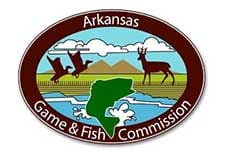

LITTLE ROCK –-(Ammoland.com)- The 2016 alligator season ended just before sunrise Sept. 26. As the fog lifted from the waters of south Arkansas on the 10th season of alligator hunting in recent history, a record 64 alligators had been harvested in two weekends of hunting.
According to Mark Barbee, AGFC wildlife biologist at the Monticello Regional Office, the record number doesn’t necessarily mean the population is growing, but has a lot to do with the availability of water during survey periods and the efforts of the hunters.
“We issue the number of permits each year based on surveys done in spring,” Barbee said. “If there’s a lot of water, we can access a lot more areas and our count may go up, allowing us to increase permits. However, higher water levels can also have a negative impact, in that alligators can disperse into new areas we can’t access, so it’s not a sure thing.”
Barbee says this year, 116 permits were available for the drawing, and out of those drawn, 111 hunters attended the mandatory orientations to receive their permit.
“Each year we have 15 or so people who don’t claim their permit or attend the mandatory orientation,” Barbee said. “This year’s participation was much better.”
Barbee says the success rate for participants this year was 58 percent, which is fairly consistent with years past.
“If you were to count the success of hunters encountering a legal gator it would be much higher,” Barbee said. “Many hunters see legal gators during the hunt but pass them up, looking for a larger one. A few get lucky and find them. Some are still looking.”
Although no alligators this season broke the state record of 13 feet, 10 inches, both zones had some gators longer than 12 feet turned in. The largest of the season came from Zone 3 (southeast Arkansas) and measured 12 feet, 10½ inches. The largest from Zone 1 (southwest Arkansas) was 12 feet, 4 inches. Plenty of 10- to 12-footers were shared via the AGFC’s Facebook page.
“We always have a respectable amount of good-size gators checked,” said Barbee. “This year social media was a little more active during the hunt and kept people’s attentions that it was going on.”
The southeast zone was responsible for 42 alligators harvested, while the southwest zone had 22 harvested animals. Barbee says it is not uncommon for the zones to switch back and forth in harvest, and that is largely based on water conditions during spring surveys, which dictates the number of permits in each zone.
Barbee says he’s seen some differences in the way people view alligators in his region since the hunts began.
“Before the hunts became popular, any alligator near someone’s property was considered a nuisance,” Barbee said. “Since then, we’ve had quite a few people report an alligator on their property, but wait until the drawings to see if one of the private-land-at-large permits went to someone they know and let them harvest the gator.”
One highlight from this season was the selection of two AGFC employees during the permit draws – Joseph Williams, a wildlife officer in Ashley County, and Denis Dunderdale, a regional education coordinator in Mountain Home. Only one other AGFC employee has ever drawn a permit for the coveted alligator tags since the hunts began in 2007.
“Everyone in the Monticello office puts in for tags every year and we never get them either,” said Barbee. “It’s a totally random draw, and sometimes that’s just how the squirrel cage rolls.”
